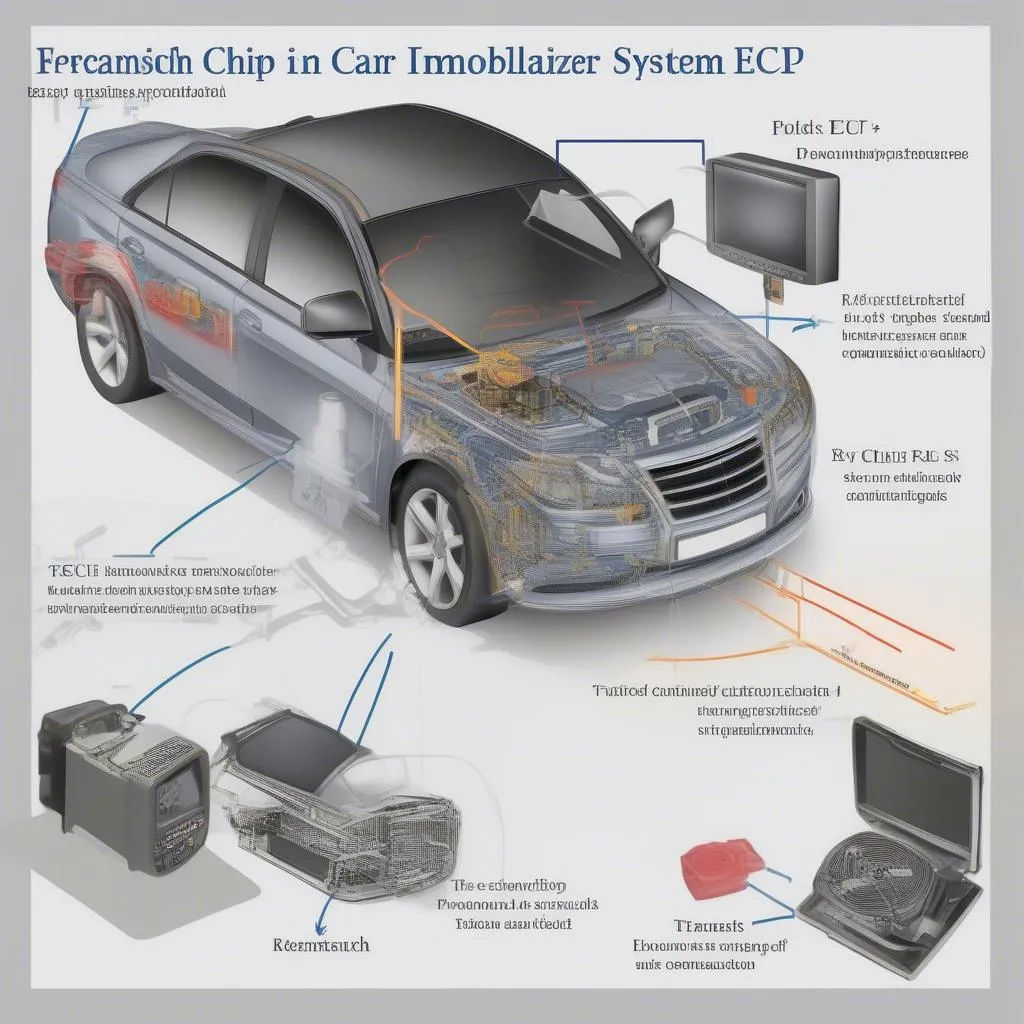Coming back to your car and finding the battery drained with the lights on is a frustrating experience, but it’s a common one. This issue can occur for several reasons, ranging from a simple mistake to a more serious electrical problem. Understanding why this happens is the first step to getting your car back on the road.
Common Causes of a Dead Battery with Lights On
1. Accidentally Leaving Lights On
The most frequent culprit is simply forgetting to turn off your headlights, interior lights, or even parking lights. Modern cars often have automatic headlights that can drain the battery if they malfunction or if something prevents them from turning off automatically.
2. Faulty Door Latch Switch
The switch in your car door that signals the interior lights to turn on and off when the door is opened and closed can wear out. If this switch malfunctions, it can cause the interior lights to stay on even when the door is closed, leading to a dead battery.
3. Battery Drain from Parasitic Draw
Even when your car is off, certain components still draw a small amount of power from the battery. This is normal, but if a device malfunctions or there’s a wiring issue, this parasitic draw can become excessive and drain the battery, especially if the car sits unused for extended periods.
4. Old or Weak Battery
As car batteries age, they lose their ability to hold a charge effectively. An old battery might not have enough power to start the car, especially after powering lights for an extended period.
5. Failing Alternator
Your car’s alternator recharges the battery while the engine is running. If the alternator fails, the battery won’t get recharged and will eventually die, even if it’s relatively new.
How to Troubleshoot a Dead Battery and Lights On Situation
1. Jumpstart your car: Using jumper cables and a working battery from another vehicle or a portable jump starter is the quickest way to get your car running again.
2. Check for obvious light sources: Once the car is jumpstarted, inspect if any lights were left on accidentally, including headlights, interior lights, trunk lights, and glove box lights.
3. Test the battery: After jumpstarting, it’s essential to have the battery tested at an auto parts store or mechanic to determine if it’s holding a charge properly. A weak or old battery may need replacement.
4. Inspect the alternator: If the battery tests fine, the next step is to check the alternator’s functionality. A mechanic can test the alternator’s output to ensure it’s charging the battery correctly.
Preventing Future Battery Drain Issues
1. Double-check your lights: Make it a habit to double-check that all lights are off before leaving your vehicle, especially if you have a habit of leaving your headlights on auto mode.
2. Address electrical issues promptly: Don’t ignore signs of electrical problems, like dimming lights, slow starting, or unusual clicking sounds when starting your car. These could be signs of a failing alternator, parasitic draw, or other electrical issues.
3. Regular battery maintenance: Get your car battery tested every couple of years, especially as it gets older. Cleaning the battery terminals with a baking soda and water solution can also help prevent corrosion and maintain good electrical connections.
Can a Smart Car Battery Prevent Drainage Issues?
Modern vehicles often come equipped with advanced technology, including smart car batteries. A smart car battery goes beyond simply storing energy; it monitors its own health and can communicate its status to the vehicle’s computer system. This data can be invaluable in identifying potential battery drain problems before they escalate.
For instance, if your smart car battery detects an unusually high parasitic draw while the vehicle is off, it can alert you through a dashboard warning light or even a notification on your smartphone app. This early warning gives you time to address the underlying issue – perhaps a malfunctioning interior light or a forgotten device plugged into the cigarette lighter socket – before the battery completely drains. smart car battery drain
Remote Diagnosis and Software Solutions
The advancement in automotive technology has brought about remote diagnosis and software solutions that can help identify and sometimes even fix battery drain issues.
For instance, some car manufacturers offer remote diagnostics services where technicians can remotely access your vehicle’s computer system to diagnose problems. In some cases, they might be able to identify a software glitch that’s causing a parasitic draw and fix it remotely with a software update. This eliminates the need for a trip to the mechanic and saves you time and hassle. things that drain a car battery
Can a Bad Alternator Ruin a Battery?
Yes, a faulty alternator can indeed ruin a car battery. The alternator’s primary function is to recharge the battery while the engine is running. If the alternator fails, it can no longer provide the necessary charge to the battery. Consequently, the battery will continue to drain as you drive, relying solely on its own reserve power. will a bad alternator ruin a battery
Over time, this constant depletion without sufficient recharging can lead to irreversible damage to the battery’s internal structure. The battery’s ability to hold a charge diminishes, and it may eventually fail completely, requiring a replacement.
Conclusion
A dead battery with the lights on is a common problem that can be caused by various factors, but understanding the causes and taking preventive measures can save you a lot of trouble. By following the troubleshooting steps above and taking proactive steps to maintain your car’s electrical system, you can minimize the chances of finding yourself stranded with a dead battery and keep your car running smoothly.

